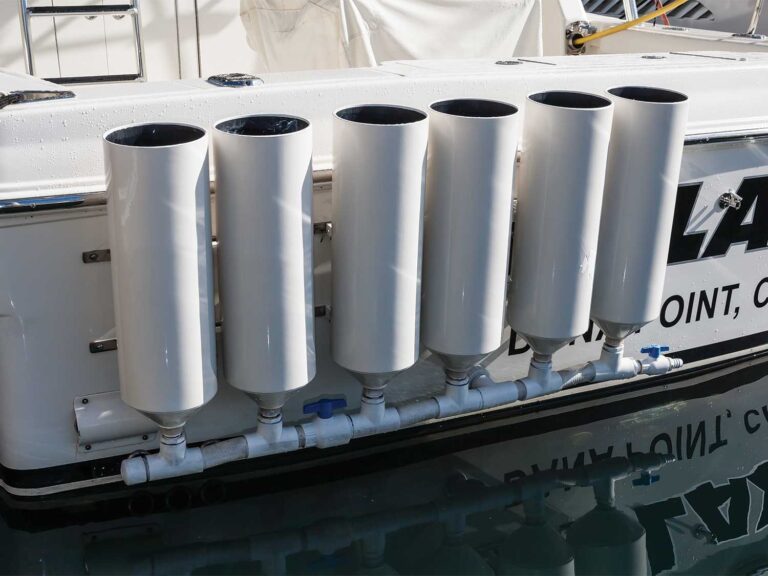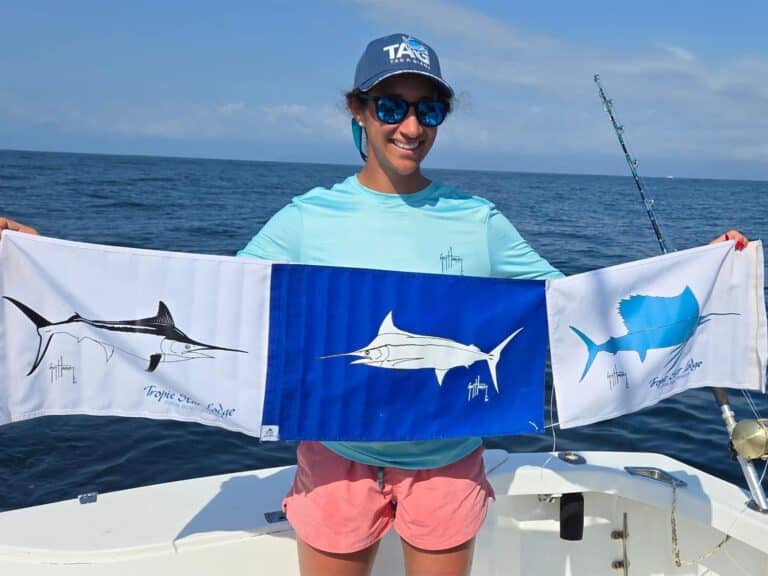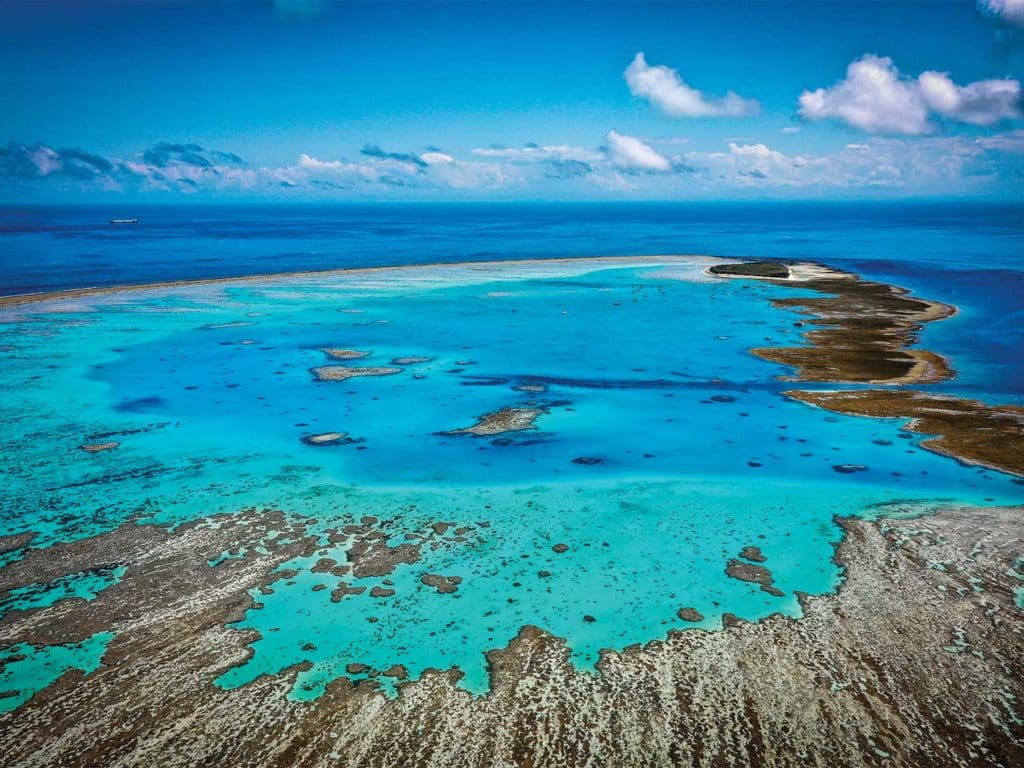
When a series of scientific reports detailing Japanese commercial longline catches along Australia’s Great Barrier Reef was released by the government of Japan in 1965, the reports not only specified how prolific the billfish were off Cairns, but they also revealed that the southern reaches of the reef off Bundaberg also produced megatons of billfish and tuna annually. They had inadvertently discovered a new fishery.
A glance at the Queensland marine chart shows that the southern end of the reef is situated right on the edge of Australia’s continental shelf. Before the 200-mile commercial no-fishing zone was enforced in 1979, the Japanese longline fleet plundered this area, catching not only large quantities of black marlin, but blue marlin and the much sought-after striped marlin as well.
Watch: We show you how to rig one of the best baits for blue marlin: the swimming mackerel.
Quality and Quantity
Since those early reports came to light, the first Australian fishermen to find out just how fishy these grounds between Fraser Island and Lady Musgrave Reef really are were the southern Queensland professional charter captains as they headed to and from Cairns for the heavy-tackle black marlin season. To conserve fuel, these vessels would usually chug along at an economical 8 to 10 knots. Of course, this ideal trolling speed allowed these guys to run a couple of lures and, quite often from the Gold Coast or Brisbane, they rarely got a bite until they reached the grounds off Fraser Island. From there and all the way up past Lady Musgrave Reef, their trips were frequently interrupted by screaming reels, often resulting in double hookups on billfish. Returning to their southern ports from Cairns, the scenario repeated itself as they passed along this productive stretch of water.
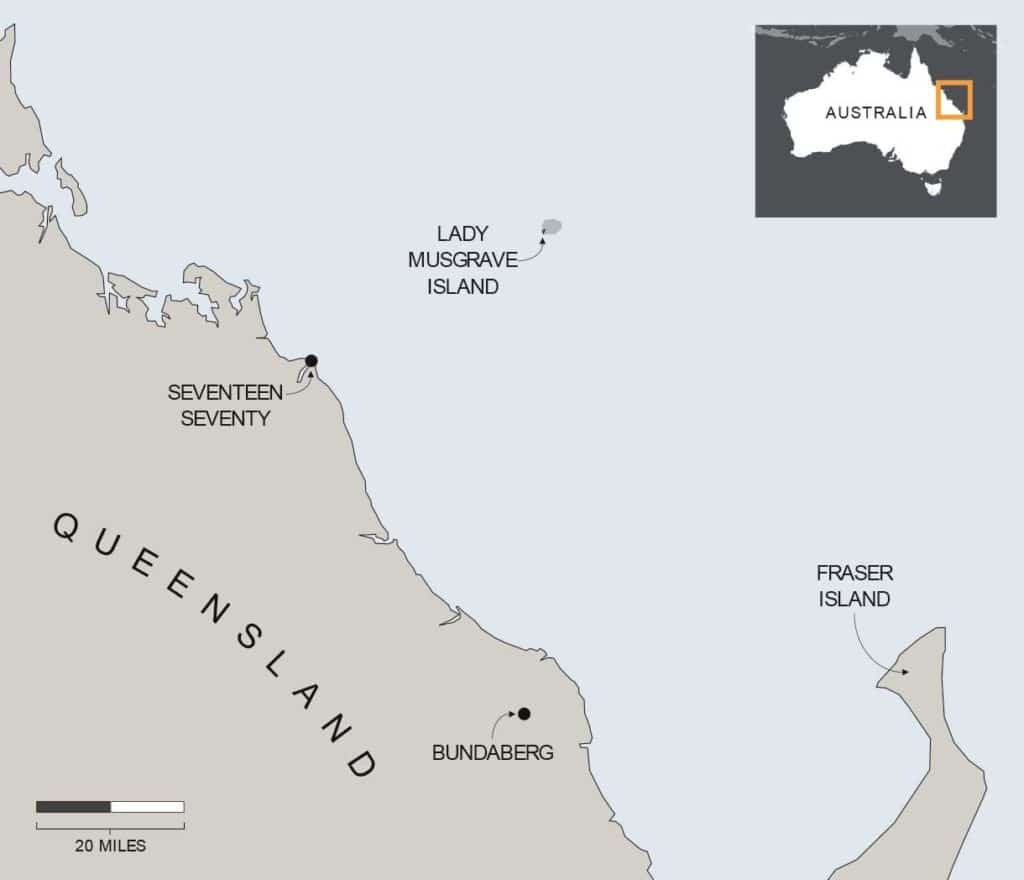
Depending on the time of year, the bites would come in the form of either striped marlin or a mix of blacks and blues. This amazing fishery was talked about for years among the southern charter fleet, but it’s been only in the past decade or so that a handful of captains have taken advantage of the fishing. The few vessels that have spent some time seriously working these grounds have reported outstanding catches, and remarkably, two massive grander-size black marlin have been caught as well.
So just how good can the fishing be in this area of the southern reef? Capt. Tim Richardson, who runs the 49-foot Tradition, caught a 1,054-pounder off Lady Musgrave Reef in late November a few years back. The following year, the Gold Coast-based 54-foot Viking Too Easy II, owned by Rob Crane and skippered by Capt. Russell Gage, spent some time on these grounds in November and caught a monstrous black marlin going 1,431 pounds. This beast missed out knocking off the long-standing Australian heavy-tackle record caught by Capt. Peter B. Wright off Cairns in 1973 by just a few pounds. Another Gold Coast charter vessel, Mistress, also had great fishing off the southern reef. In one short season alone, father and son captains Brett and Barry Alty fished just 44 days; during this time, they tagged and released 87 blue marlin, 20 black marlin and seven striped marlin. They also fought and lost two huge blues over the 1,000-pound mark; even their bycatch of big mahi, wahoo and yellowfin tuna was more than impressive.
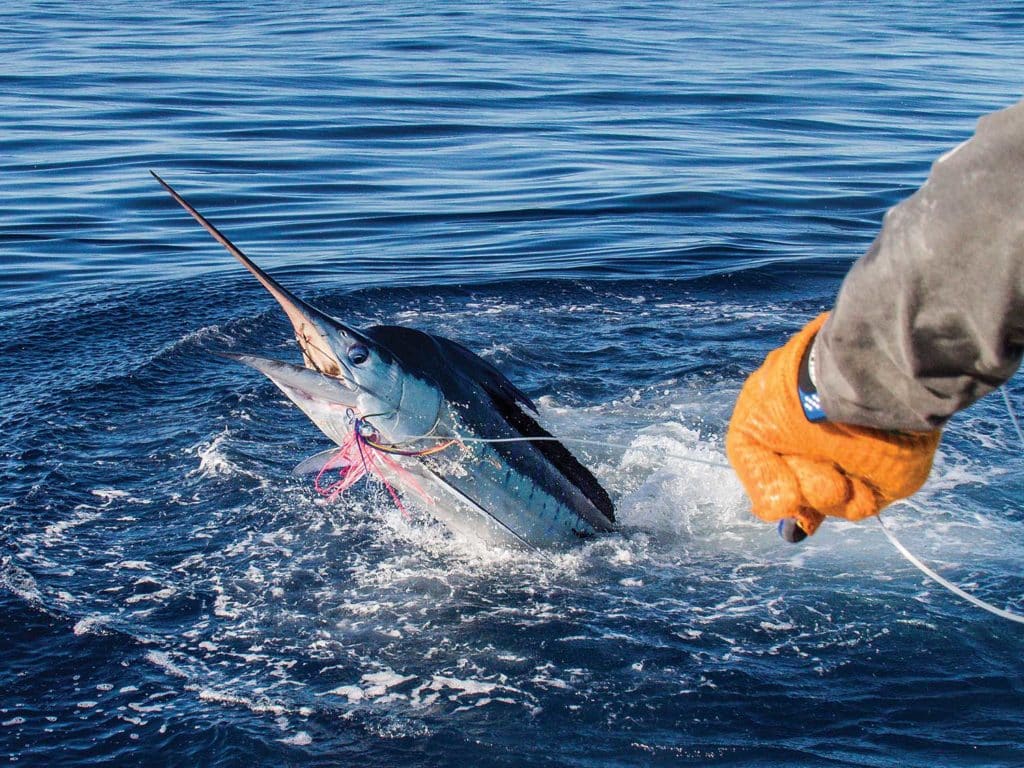
Remote and Wild
Fishing these grounds out wide of the reef presents captains and crews with two issues, namely the changing weather conditions and the long runs to reach the area. Day trips from the two closest ports are really not an option; from Hervey Bay to the fishing grounds off Fraser Island is a run of about 75 nautical miles. This particular journey is also quite hazardous because of the maze of sandbars and narrow channels that must be carefully negotiated around the inside and top end of Fraser Island. It’s not a trip to be taken lightly.
Farther north, the journey from Bundaberg or the town of Seventeen Seventy out to Lady Musgrave Reef is certainly a lot easier, but it’s still a 65-mile run; and even if the weather is average, it’s a long, uncomfortable trip on the open ocean. Conditions can change daily, or even hourly. The other issue is that there is no place to refuel or have access to fresh water, so boats that intend to stay for an extended trip need to be completely self-sufficient.
Today, there are still only a handful of vessels from the Gold Coast, Brisbane, Mooloolaba and Hervey Bay fishing these grounds. When weather patterns are favorable, a few well-set-up offshore trailer boats from Hervey Bay join the bigger sport-fishers on the grounds. The trailer boats will load up with extra fuel, water and provisions, and, like most vessels, they are able to use the lee of Fraser Island as an overnight anchorage in order to extend their fishing time. Depending on the wind or swell direction, either Orchard Beach behind Waddy Point on the northeast tip of the island or Platypus Bay on the upper northwestern side are the two anchorages closest to the fishing grounds. Even then, it’s still a good 30-mile run out toward the continental shelf drop-off before you start fishing. From Fraser Island up to Lady Musgrave Reef, it’s a distance of about 100 miles.
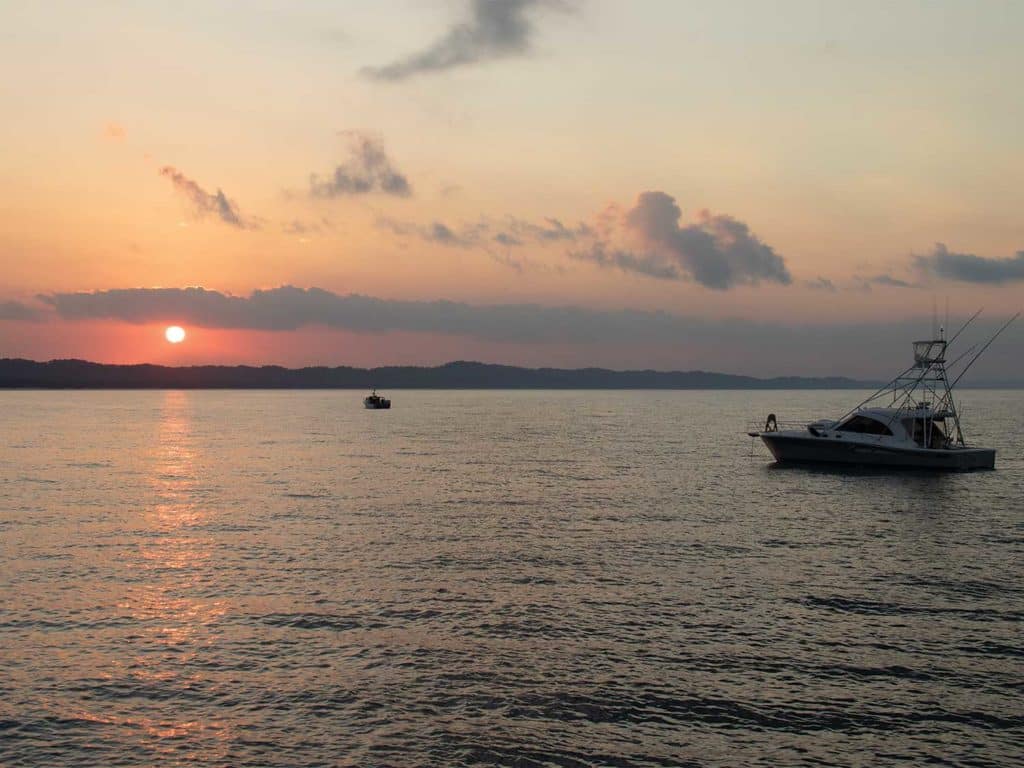
Game On
For many years, I had heard and read all the reports from these amazing grounds and have even reviewed a copy of the old Japanese longline statistics from the area. I’ve been up to Fraser Island for its renowned light-tackle fishing many times, but I’d never experienced the offshore grounds until recently. In prime-time November a few years ago, I managed to ride along with Capt. Bobby Jones on the 65-foot Precision Merlin.
Jones is now retired after 40 years of professional charter fishing off the Queensland coast. All of his action-packed years of chugging and trolling through this particular area while en route to Cairns and back made him extremely interested in doing some serious fishing there one day. The season before my trip, he took Merlin and tagged and released enough blue marlin to encourage him to have another go at it.
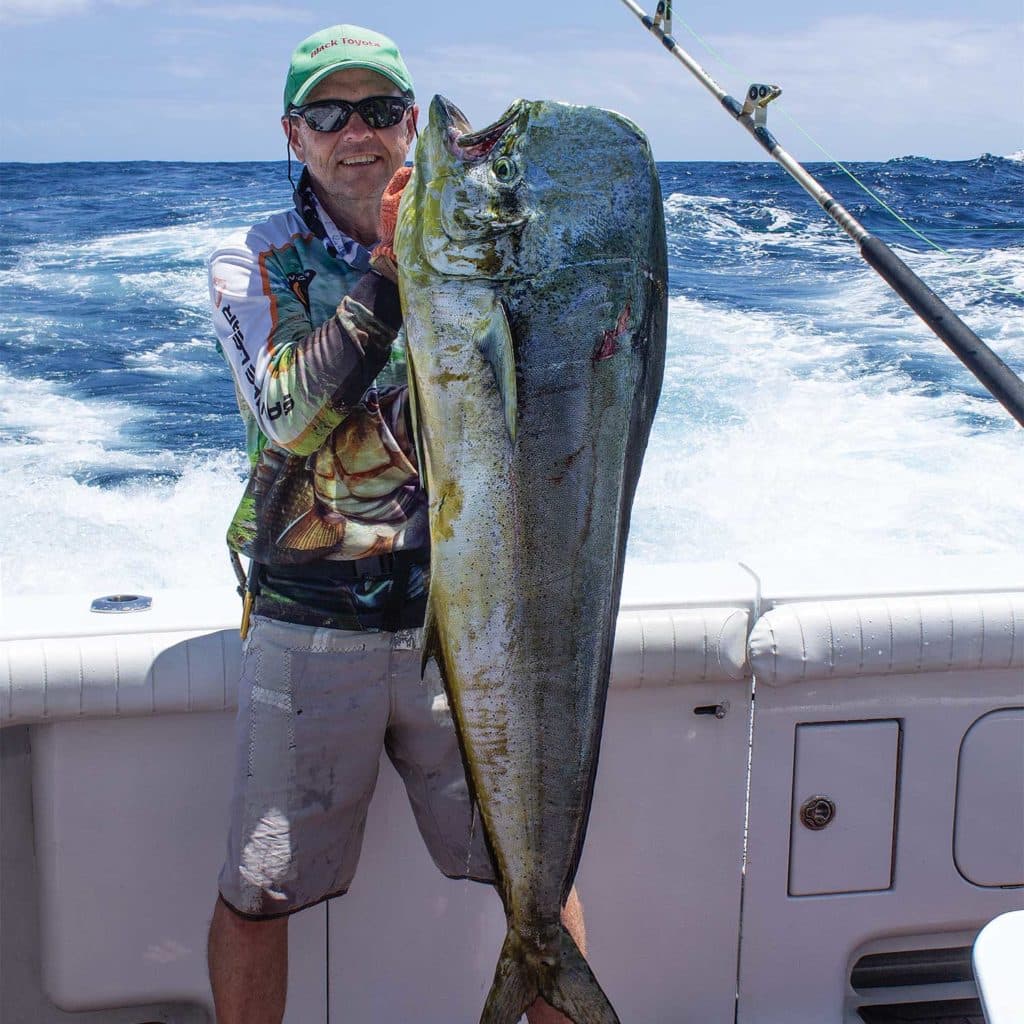
We cruised the 200 miles from the Gold Coast up to the lee of Fraser Island to spend the night in ideal conditions. The next morning, our first run out to the offshore grounds was certainly interesting as we passed through the nasty danger zone 4 miles east of the island, where sandbanks and narrow channels have to be carefully navigated. Once clear of the shallows, the bottom dropped away quickly, and the ocean took on a nice cobalt-blue color, with prominent current lines stretching as far as you could see.
The conditions looked so tempting that the crew put out a spread of lures in 70 fathoms, and within minutes, we caught a large mahi—fresh fish for dinner. By the time we reached 90 fathoms, we had our first blue marlin hookup, and Jones’ wife, Lorraine, was in the fighting chair going to work on a lively 400-pounder. She did a great job, and the blue was quickly tagged and released in perfect condition a short while later.
That was the start of some nearly out-of-control marlin action. We tagged and released six blues, with plenty of other missed bites and a few pulled hooks as well. A couple of other Gold Coast vessels working the area nearby also had plenty of bites. During the week, Too Easy II had an amazing time, with more than a dozen blue marlin hookups in one day; they tagged and released nine blues up to 600 pounds. That’s world-class billfishing in anyone’s language.
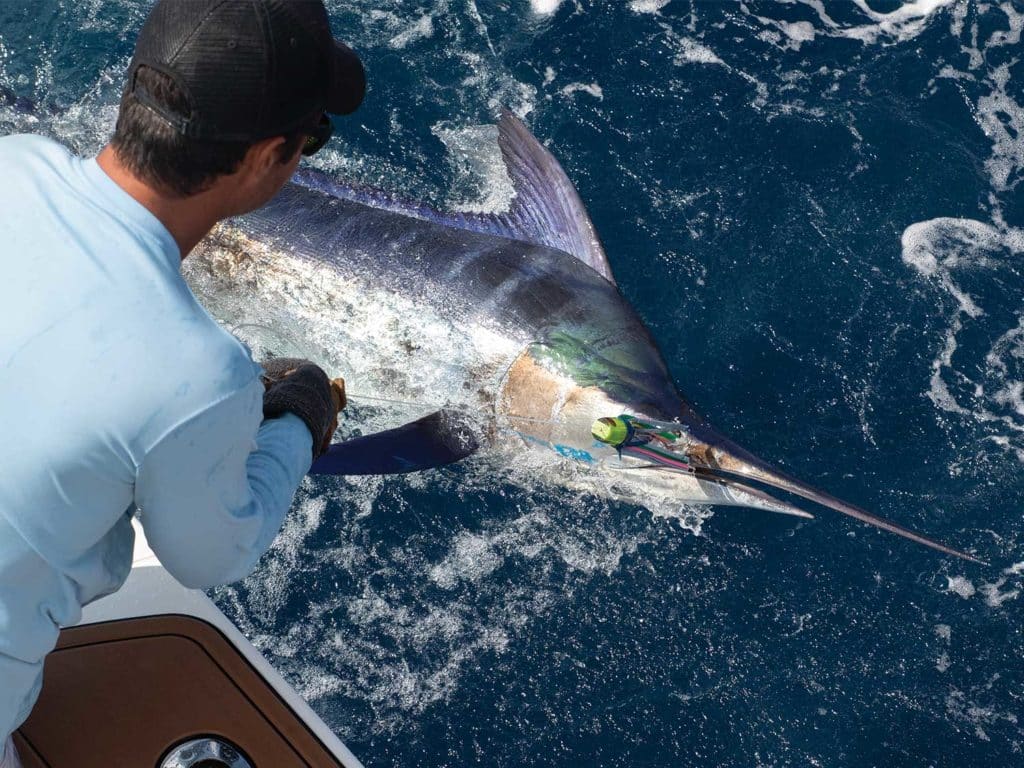
Heavy Tackle, Wild Fish
We were all fishing heavy 130-pound tackle just in case a big blue turned up. One benefit to using this size gear while catching the average 300- to 500-pounders was that the fight times were short and sweet, and all the marlin we released were in top condition. Australian crews also make every effort to tag their fish, insisting that it’s not an official release until it’s tagged. One blue we caught had obviously been hooked and broken off in the area a little earlier because it still had a fresh leader hanging from its mouth. This lively 400-pounder went berserk when we punched a tag in its shoulder, and we had no chance of removing the hooks without possible damage to either the marlin or a crewman, but it just goes to show that these wild billfish will quickly eat another bait after a previous encounter.
Read Next: Get to know some of the photographers who have contributed to the unique look of Marlin over the years.
Every day for more than a week, we enjoyed great weather conditions as we worked our way north. We also lost count of the bites we had along what we had now christened the Marlin Highway. We not only tagged a stack of blue marlin, but also had enough jumbo mahi and big wahoo to keep the crew jumping. Our largest blue of the trip was estimated at 550 pounds. This fish went absolutely crazy, rocketing past the side of boat, tail-walking the entire way. Jones had his hands full trying to spin the 65-footer around in time to prevent the line from dragging alongside, but after some world-class maneuvering, we were able to spin into position and back on the fish for another quick tag-and-release.
In years to come, these productive grounds are bound to produce many Australian and line-class world records for all three billfish species, simply because of the sheer number of opportunities. The Gold Coast vessel French Look III has been close to the mark many times on blue and striped marlin records, and the giant 1,431-pound black that Too Easy II caught just missed out on a heavy-tackle record. If it’s going to happen anywhere, the stretch of water between Fraser Island and Lady Musgrave Reef is a likely contender.
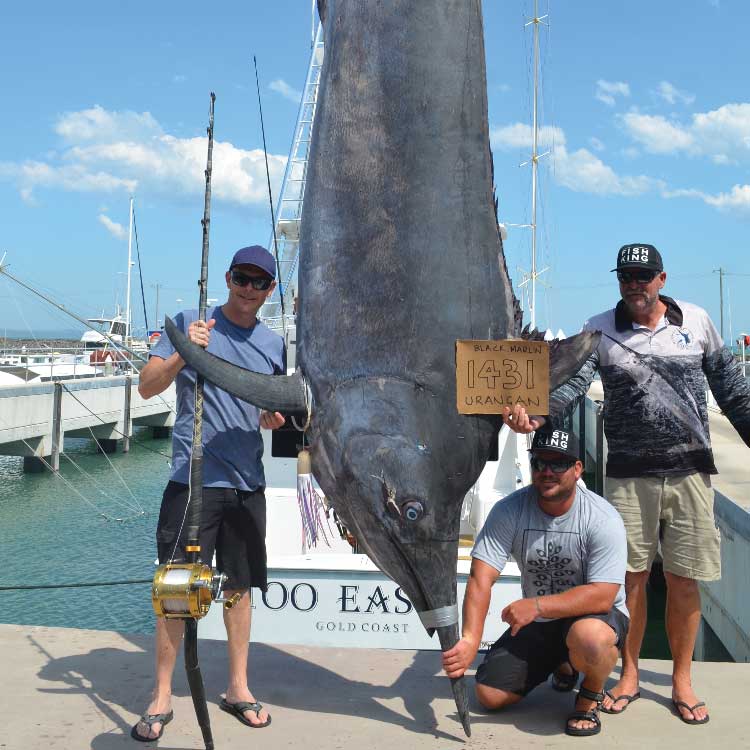
Run to Mother
Now that the word is out, more vessels are bound to start concentrating on these remote grounds; my guess is that someone will organize a professional charter operation utilizing a mothership in order to work out of Lady Musgrave Reef. This magnificent reef has a deep opening to accommodate vessels inside, and it’s reasonably well-protected from the ocean swells. It’s also situated very close to the Marlin Highway that runs all the way south to the area off Fraser Island. A mothership operation would cut down the long runs from the coastal towns—and Fraser—and therefore greatly reduce the expensive fuel costs. The other advantage that would make Lady Musgrave Reef the ideal charter-boat base is that it is serviced daily by two large, high-speed catamarans for the many tourists visiting the reef from Bundaberg and the town of Seventeen Seventy. These ferries could easily bring out and return new anglers and crews, along with all their tackle and gear as well.
A viable mothership operation would require a vessel of only around 100 to 130 feet that could carry plenty of fuel for the gameboats. A high-volume watermaker would also help greatly to produce enough fresh water to keep everything clean and salt-free each afternoon, as well as providing fresh drinking water. Restocking supplies and refueling could easily be done in reasonable weather for a one-day turnaround in Bundaberg. The future possibilities of these barely touched and extremely fishy marlin grounds are absolutely mind-blowing.




